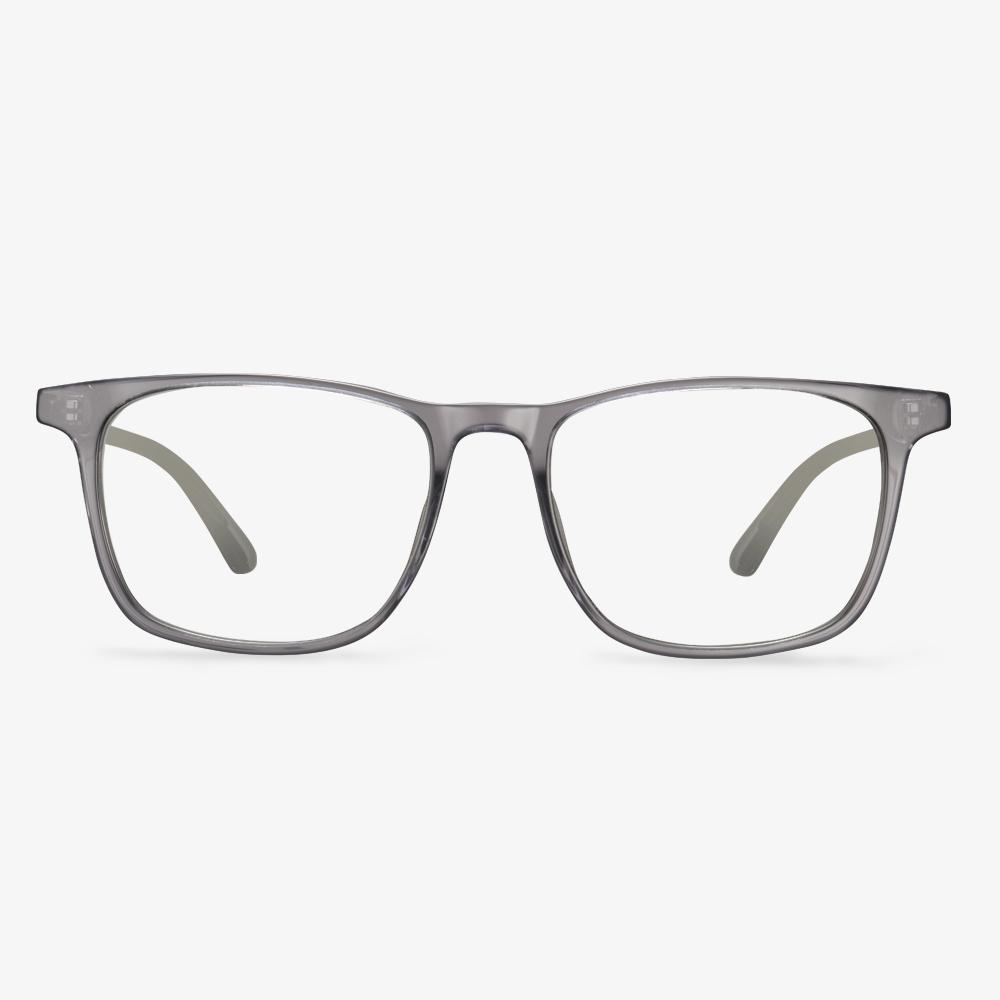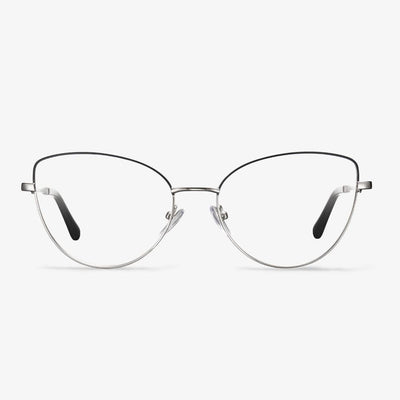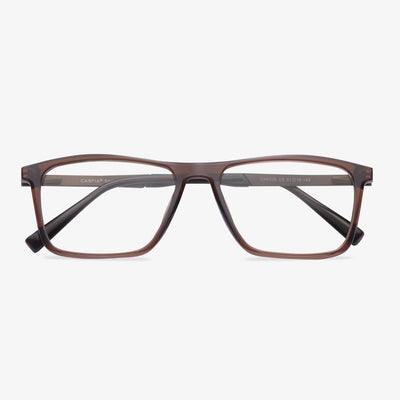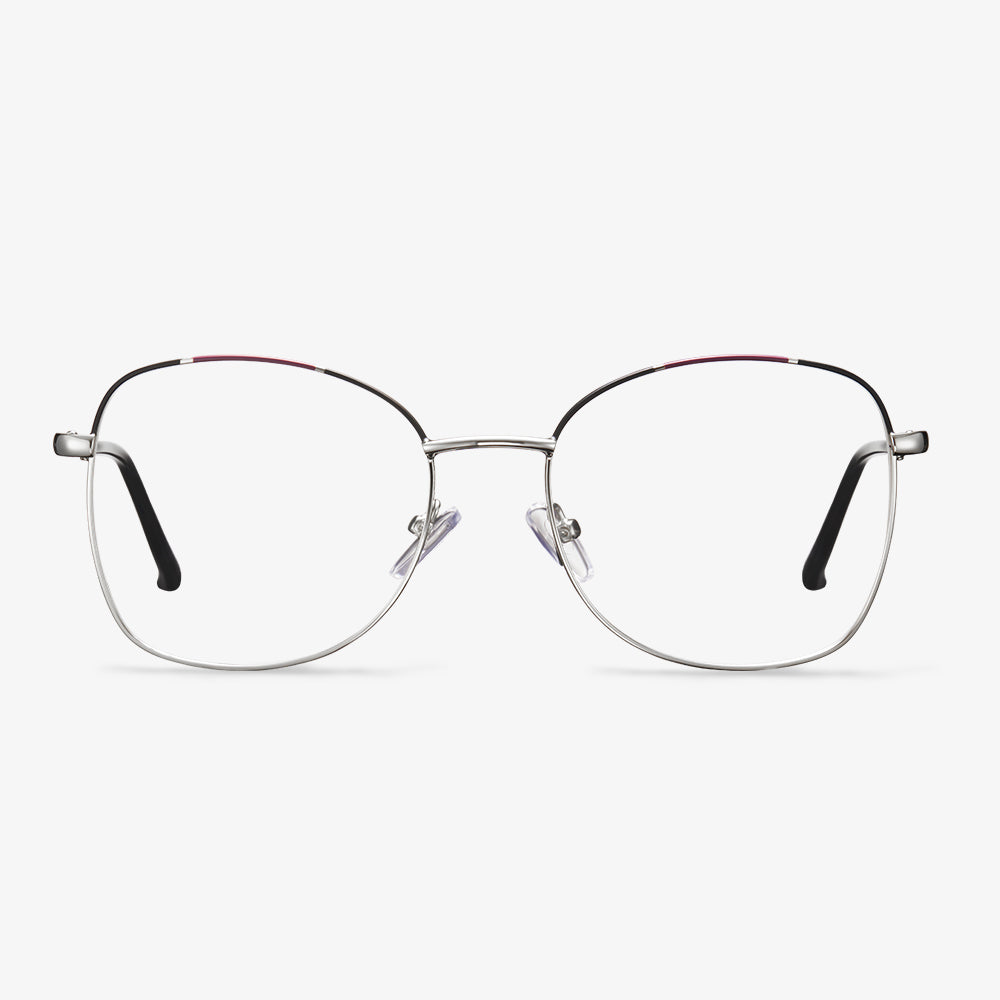Acetate frame and plastic frame
What is the difference between acetate frame and a plastic frame? Acetate frames are lighter and generally considered to be better than plastic frames. Acetate is known for its hypoallergenicity, so it is a popular choice for people with sensitive skin. Unlike some plastic or metal frames, they can cause allergic reactions.
- The manufacturing process makes the plastic frame more brittle than the acetate frame.
- If the temple does not have a metal bracket, it is difficult to adjust the plastic glasses.
- There are fewer choices of colors and patterns for plastic frame
However, you will notice that acetate frames are generally more expensive than ordinary plastic frames. Spectacle frames are daily necessities that we use for a long time. Therefore, durability is essential, and the life span of the acetate frame is longer.
Commercial pure titanium eyeglass frame
Commercial pure titanium eyeglass frame gives people a professional, handsome, rigorous attitude. The commercially pure titanium eyeglass frame is generally square, with a simple design. And the style is more versatile, making people a cool and handsome feeling. It is men's preferred choice! And for the display of their professional image, they play a great role!
Where to Buy Anti-Reflective Glasses?
From the above, you have learned some benefits of anti-reflective glasses. You may ask where I can buy them. To do that, you can buy them from the local optical store. But now, you can buy them online and it can bring you great convenience.
So, if you want to buy anti-reflective glasses online, Koalaeye Optical is recommended. It provides all kinds of eyeglasses, sunglasses, and frames. What’s more, Koalaeye Optical provides a free shipping service so that the package will be mailed for you with your great convenience.
Glasses should not have serious color differences.
Children's eyes are not fully developed, and the eyeball is still growing slowly, at this time it is best not to wear such blue light glasses with the serious color difference. If you always see things with color differences, it will cause eye discomfort, resulting in increased myopia, but the opposite. The big color difference will cause low light transmittance, affecting child macula development. In the case of long-term distortion and discoloration, visual physiology and psychology will be affected.
Blue light glasses for children have special lenses that block some light waves, which may help protect children's growing eyes from digital eye strain. Blue light lenses sometimes have a slight yellow tint. You can buy prescription or non-prescription glasses with child-size frames and lenses that filter blue light. They don't filter out all the blue light, but they can reduce your child's exposure to blue-violet light by 80 percent or more.
Driver's protective glasses
The principle of the driver's protective glasses is to use the special film on the glasses to reflect the strong light hitting the glasses back to protect the eyes. It can protect against ultraviolet, infrared and blue light on foggy and rainy days. In snowy weather and at night, the wearer can see the scenery more clearly, and it can also increase the vividness of red, yellow, green, white, and other colors, and eliminate the glare and reflected light of the oncoming cars when meeting cars at night.
The spirit behind celluloid glasses
Because celluloid material is flammable, it cannot be mechanized and basically needs to be created by hand, which forms a unique set of handcraft modes of Japanese crafters. Today, there are only a few celluloid factories in Japan, and the unique manual process and production are relatively small. This makes celluloid handmade glasses even rarer and more valuable. Celluloid was originally a very common and cheap material, even with a certain degree of danger, but because of the unique craftsmanship of skilled craftsmen, its performance was brought to the extreme, so that celluloid glasses became unique and sought after by some people. The material of the frame is an important factor that determines the comfort of the glasses. While ensuring comfort, people hope that the glasses can have a decorative effect and play a role in clothing matching in different scenes.
Parameters of lens material selection
Abbe number
Since the refractive index of the lens material varies for the light of different wavelengths, and white light is made up of various colors of light of different wavelengths, the dispersion phenomenon occurs when the lens refracts white light. The dispersion coefficient is an important index to identify the sharpness of lens imaging, which is usually indicated by Abbe number (Abbe number = dispersion coefficient). The larger the Abbe number, the smaller the dispersion, and vice versa, the smaller the Abbe number, the larger the dispersion, and the worse the resolution of the image.
Impact resistance
Humans have been using glass lenses for about 300 years, and it was not until 1947 that the first resin lenses made of CR39 were produced. A big reason for using resin lenses is their safety, i.e. impact resistance. Only lenses that pass the Drop Ball Test are considered safe. Combining the above two parameters, we can compare different lenses.


















































